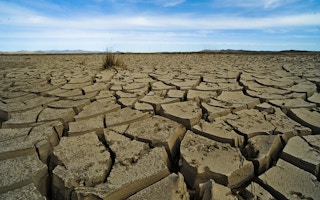Late last year, at their summit in Riyadh, G20 leaders identified climate change as one of the most pressing challenges of the twenty-first century. “As we recover from the pandemic,” their communiqué read, “we are committed to safeguarding our planet and building a more environmentally sustainable and inclusive future for all people.” That commitment hasn’t quite materialised.
To continue reading, subscribe to Eco‑Business.
There's something for everyone. We offer a range of subscription plans.
- Access our stories and receive our Insights Weekly newsletter with the free EB Member plan.
- Unlock unlimited access to our content and archive with EB Circle.
- Publish your content with EB Premium.
To be sure, the carbon intensity of the energy supply in G20 countries is declining. Coal use is falling, power-sector pollution is edging down, and a host of new clean-transport policies is being rolled out. G20-led initiatives to encourage businesses to disclose climate risks are starting to bear fruit.
But none of this is happening fast enough to make a real dent in emissions, not least because G20 countries are also quietly funneling cash toward carbon-intensive sectors. According to Vivid Economics, of the $4.6 trillion the world’s leading economies pumped into the agriculture, industry, waste, energy, and transport sectors as part of their pandemic-relief packages, less than $1.8 trillion was “green.”
As a result, in 15 of the 20 economies Vivid Economics assessed, stimulus spending would have a “net-negative environmental impact.” The 2020 Climate Transparency Report similarly found that some 30 per cent of all stimulus spending went toward environmentally-intensive sectors, with coal, oil, gas, and aviation among the biggest beneficiaries.
What happens at October’s Rome G20 meeting will play a major role in determining whether November’s United Nations climate-change summit (COP26) in Glasgow produces the ambitious emissions-reduction targets and climate-finance pledges the world needs to keep global warming from exceeding 1.5° Celsius, relative to pre-industrial levels.
G20 countries not only account for 85 per cent of global GDP, 75 per cent of international trade, and two-thirds of the world’s population; they also pump out an estimated 80 per cent of greenhouse gas (GHG) emissions every year, with China alone producing 26 per cent of the global total.
Unfortunately, the G20 has a long record of big talk and little action. If you want impressive rhetoric or a plan for a plan, the G20 is fine. If you want action, you may want to look elsewhere. Yet, given increasingly bleak scientific evidence – and a range of recent extreme weather events – there is renewed tension and pressure.
G20 leaders need to capitalise on promising signs earlier this month at a climate conference in Venice, where Kristalina Georgieva, the managing director of the International Monetary Fund, and head of the World Bank, called for tougher carbon pricing and an end to the trillions spent on fossil fuel subsidies. Jin Liqun, the president of the Asian Infrastructure Investment Bank, said financing international coal was losing appeal, even in China. Christine Lagarde, the European Central Bank’s president, spoke of a new era of transparency about the financial sector’s “climate-related vulnerability,” warning that “the most vulnerable 10 per cent of banks may see a 30 per cent increase in the average probability of default of their credit portfolios between now and 2050.”
Some G20 economies are taking positive steps. The European Union, the United States, and the United Kingdom have devised more ambitious emissions-reduction plans more closely aligned with the 1.5°C goal. Argentina, Canada, and Japan have also submitted new, tougher 2030 climate targets. South Africa says it will do the same later this year.
Yet many big polluters – Australia, China, India, Indonesia, and Saudi Arabia – have still not submitted new plans for COP26. Brazil, Russia, and Mexico have, but none represents an improvement on their previous pledges. Brazil, for one, expects a 35 per cent rise in emissions compared to previous baselines by 2030.
As G20 president, Italy – together with its European, US, and UK partners – is putting pressure on the lagging economies to submit new, more ambitious climate plans, align their long-term strategies to net-zero by 2050, end fossil fuels subsidies by 2025, and end international coal finance. For their part, developed economies need to devise a credible plan to deliver the $100 billion per year they pledged to help developing countries tackle climate change.
COP26 President-Designate Alok Sharma is rallying developed countries to fulfill that promise, and UK Chancellor of the Exchequer Rishi Sunak – who was behind a recent controversial cut to UK overseas aid – needs to step in. But Italian Prime Minister Mario Draghi also has a critical role to play in pledging a new and higher climate finance commitment for his country, as well as convincing his counterparts, in particular Xi Jinping, to cooperate.
US President Joe Biden also needs to raise his game. Even if his administration achieves its stated goal of doubling climate-finance spending to $5.7 billion per year by 2024, the US will be providing only about a quarter of what the EU is delivering today. This should be doubled to over $11 billion a year to keep pace with other developed countries and approach the US’s fair share, estimated at around 40 per cent of the $100 billion.
Yet these are merely short-term imperatives, and climate change is not a short-term threat. In the longer term, G20 countries must lead the way in designing and building a greener and fairer global economic and financial system.
Institutional reform will be difficult, but it is essential to ensure that climate resilience, decarbonisation, and inequality receive the attention they deserve. For example, the G20 should push the IMF to go further in providing debt relief to poor countries and support its proposal to build a new Resilience and Sustainability Trust linked to the reallocation of special drawing rights to enable countries to undertake green reforms and policies. And it should pressure the World Bank and regional development banks to move much faster in reallocating funding from oil, gas, and coal and to the green economy.
Critically, the G20 should adopt the multi-annual Sustainable Finance Roadmap currently being discussed between Sharon Yang, a deputy assistant secretary at the US Treasury, and Ma Jun, a representative of the People’s Bank of China, as co-chairs of the G20 Sustainable Finance Working Group. This would be a major step toward harmonising global green-financing norms and aligning flows to the Paris agreement, and toward entrenching US-China cooperation. G20 countries must also support the call by Mark Carney, the UN’s climate finance envoy, to ensure that climate-risk reporting becomes mandatory before or by COP26 and that businesses are investing in net-zero transition plans.
These efforts will not guarantee success at COP26. But they would be a solid start. This month, G20 leaders should remember that only they have the clout to put the world on the right path.
Luca Bergamaschi is Co-Founder of ECCO, an independent Italian think tank on climate change.
Copyright: Project Syndicate, 2021.
www.project-syndicate.org











